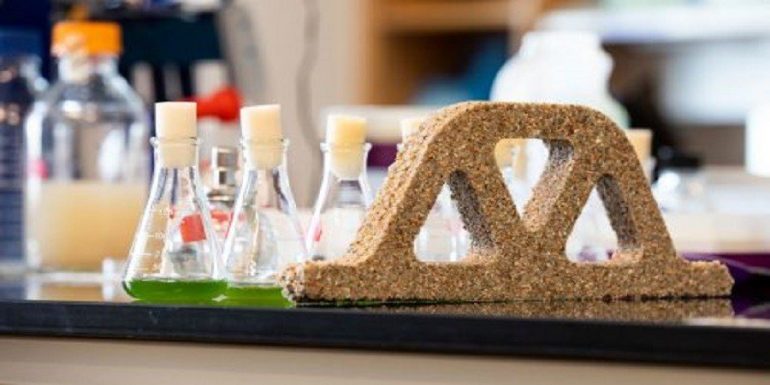Cement and concrete have not changed much in the last 100 years, but now researchers in the United States have developed a revolutionary material that literally brings concrete to life.
The new method combines sand and photosynthetic bacteria to make a living material that takes on different shapes and has both structural strength and biological function. It is also more environmentally friendly and could reduce the current large environmental "footprint" of the energy-intensive construction industry in the future.
The researchers, led by Will Schrobar, head of the University of Colorado Laboratory of Living Materials, published in the journal Matter, created a "scaffold" of sand and hydrogel in which micro ) can be developed.
Hydrogel retains moisture and nutrients, which allow bacteria to multiply and - once they absorb carbon dioxide - to be mineralized, a process similar to that which leads to the formation of shells in the sea. The end result is a vibrant material that aims to compete with cement-based building materials. Although the researchers called their material "living concrete", it actually looks more like "living plaster" in terms of strength, while the bricks from the new material are not yet as strong as conventional bricks.
"We used photosynthetic cyanobacteria to bio-mineralize the scaffold so that it is green. The material remains alive and has something of Frankenstein. We already use organic materials in our buildings, such as wood, only these materials are no longer alive. Why not keep them alive? ”Schrouber said
About 9% to 14% of bacterial colonies in the new material remain alive after 30 days. In fact, the new material is not only alive, but also reproduced, so it could repair the cracks on its own. Even if one cuts a brick of new material in the middle, the bacteria can create two new whole bricks with the help of a little extra sand, hydrogel and nutrients. A mother brick can produce up to eight bricks after three generations.
Concrete is the second most consumed material on Earth after water. Cement production (raw material for concrete) is responsible for 6% of total annual carbon dioxide emissions, while concrete itself releases carbon dioxide. The new method, which has a smaller "carbon footprint", is an environmentally friendly alternative to today's building materials.
The next step for researchers is to explore the many applications that new material can have. One possibility that will be explored is the introduction of bacteria with different properties into the mixture, to produce corresponding new materials with different biological functions, such as the ability to "feel" and respond to air toxins. Even such materials can be useful for building structures in deserts or on other planets such as Mars, where there are limited raw materials for construction.
"In such environments the new materials would perform particularly well because they use sunlight to grow and grow, with minimal need for other external material. "Something like this will happen one way or another, as we are not going to carry sacks of cement on Mars," Srubar said.
The technique needs to be improved, however, as cyanobacteria need moisture conditions to survive in the new material, which is not possible in dry and arid areas. That's why researchers are already trying to create genetically modified bacteria, which will be much more resistant to lack of moisture, in order to stay alive.
The research is funded by the US Department of Defense's Advanced Research Projects Agency (DARPA), which apparently also envisions military applications in the new material. More generally, Engineered Living Materials (ELM) are a promising new scientific field, as they inanimate inanimate materials - thanks to the incorporation of microorganisms - so that matter acquires the ability to sense, communicate and respond to external stimuli. (pressure, light, etc.).
Source: sigmalive
